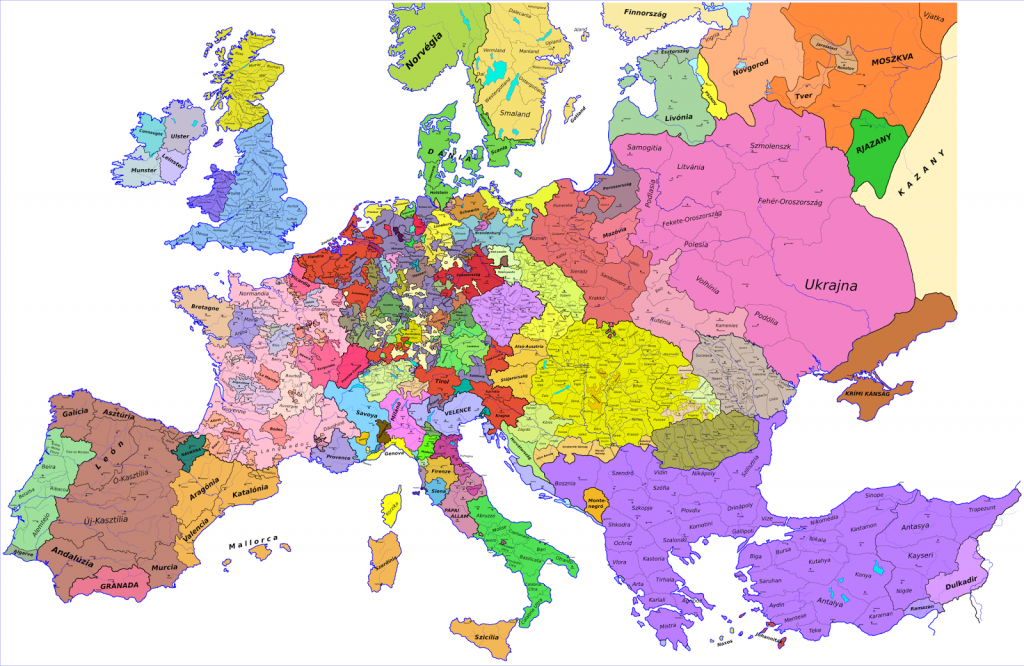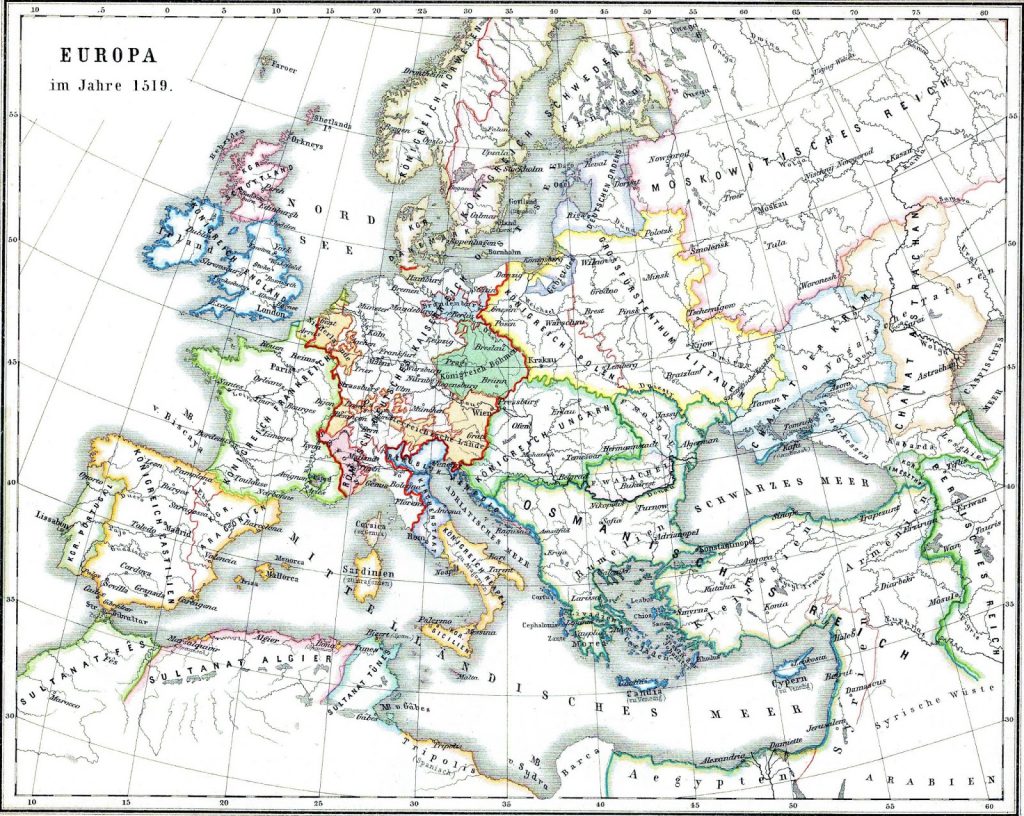Atlas of European history
European history is a vast and complex tapestry of events, cultures, and civilizations that have shaped the continent over millennia. It encompasses ancient civilizations such as the Greeks and Romans, the medieval period with its feudal systems and the rise of Christianity, the Renaissance, which saw a revival of art, science, and learning, and the Age of Exploration, which brought about global exploration and colonization.
The continent has also been marked by numerous wars and conflicts, including the Hundred Years’ War, the Napoleonic Wars, and the two World Wars of the 20th century. The Cold War divided Europe into Eastern and Western blocs, with the fall of the Berlin Wall in 1989 symbolizing the end of this era.
European history is characterized by cultural diversity, intellectual achievements, and political transformations, with the European Union being a modern attempt at fostering unity and cooperation among its nations. Today, Europe is a complex mosaic of countries with rich histories and diverse societies, making it a dynamic and influential region on the global stage.
Table of Contents
Europe in 476 CE
In 476 CE, Europe was in a state of transition and turmoil. The Western Roman Empire, which had dominated the region for centuries, was in its final stages of decline. In that year, the last Roman emperor, Romulus Augustulus, was overthrown by the Germanic chieftain Odoacer, marking the traditional date for the fall of the Western Roman Empire.
During this period, Europe was characterized by the fragmentation of political power, as various Germanic tribes and kingdoms asserted their dominance. The Roman cultural and administrative structures were giving way to a more decentralized feudal system, with local lords and nobility holding sway over their territories. The Eastern Roman Empire, centered in Byzantium (modern-day Istanbul), continued to exist and would later become the Byzantine Empire.

Europe in 476 CE was a landscape of shifting allegiances, migrations, and the blending of Roman and Germanic traditions, setting the stage for the medieval period and the emergence of distinct European kingdoms and cultures.
Europe after the death of Charlemagne 814 CE
After the death of Charlemagne in 814 CE, Europe entered a period of fragmentation and decentralization. His vast Carolingian Empire began to disintegrate, with his grandsons dividing it into West Francia, Middle Francia, and East Francia. West Francia eventually became modern-day France, while Middle Francia dissolved into smaller states. East Francia, ruled by Charlemagne’s successors, laid the foundation for the Holy Roman Empire.

This era marked the beginning of feudalism and the emergence of numerous independent feudal states and kingdoms in Europe.
Europe in 900 CE
In 900 CE, Europe was characterized by a fragmented political landscape. The Carolingian Empire, established by Charlemagne, had dissolved into smaller feudal states. Viking raids and invasions were prominent, affecting regions such as England, France, and the Mediterranean. The Byzantine Empire in the east remained a significant power, while the Islamic Caliphates continued to influence the Iberian Peninsula and Southern Italy. Feudalism was on the rise, with local lords holding significant authority over their territories marking the early stages of medieval Europe.

New states were created, in a great arc running from the Celtic world, through Scandinavia, and on to the Slavic world. In 900 A.D. the beginning of the history of France and Germany.
Europe in 1000 CE
In 1000 CE, Western Europe was less developed related to the Islamic world, with its broad network of the caravan trade. Constantinople had a population of about 310 thousand, but Rome had only 36 thousand, and Paris 21 thousand. By difference, Córdoba, in Islamic Spain, at this time, was the world’s most populous city (455 thousand citizens).
The Vikings had a trade network in northern Europe, including a way, uniting the Baltic Sea to Constantinople within Kievan Rus.
With almost the whole kingdom lately devastated by the Vikings, England was in a desperate state. The long-suffering English later responded with a butchering of Danish homesteaders, heading to a round of acts of revenge and lastly to Danish rule, though England recovered freedom soon after. However, Christianization made fast growth and established itself as the long-term resolution to the problem of barbarian invasion. The areas of Scandinavia were quick to be Christianized Nations. Kievan Rus lately turned to Orthodox Christianity and grew as the largest state in Europe.
Deforestation of the densely forested continent of Europe was begun. 1000 A.D. was considered as a return to urban life, with the Italian towns doubling in population.
In Great Britain, a unified Kingdom of England had developed out of the various Anglo-Saxon kingdoms. In Scandinavia, Christianization was in its early stages. London, deserted for many centuries, was again England’s main economic center by the 10th century.

In Europe, the Holy Roman Empire established itself as the most powerful country. The papacy was tightly under the control of German Emperor Otto III. The Papacy during this time was in a period of decline, in retrospect known as the “Dark Age” (“pornocracy” or “rule of harlots”).
The Byzantine Empire under the Macedonian dynasty was engaged in a long and hard war with the First Bulgarian Empire.
Hungary was established in 1000 CE as a Christian state. The southern Iberian peninsula would still be dominated by Islam.
Europe in 1328 CE
In 1328, Europe was marked by a complex tapestry of kingdoms, principalities, and city-states. The Hundred Years’ War between England and France was in its early stages, with England’s Edward III claiming the French crown. The Holy Roman Empire, under Emperor Louis IV, was navigating internal conflicts and power struggles. Italy was divided into various city-states, and the Italian Renaissance was still a few decades away. The Black Death, a devastating pandemic, had swept through Europe, leaving a significant impact on the population and society. The late Middle Ages in Europe were characterized by feudal systems, chivalry, and the beginnings of the Renaissance, which would usher in a new era of art, culture, and scientific discovery in the following centuries.
Below is the map of Europe in 1328 created by András Bereznay.

In 1328, Eastern Europe comprised a mosaic of states, including the Grand Duchy of Lithuania, the Kingdom of Poland, the Kingdom of Hungary, the Kingdom of Bulgaria, the Golden Horde (Mongol successor state), the Grand Duchy of Moscow, and several other Slavic political entities.
Europe at the end of the reign of King Matthias Cornivus of Hungary in 1490 CE
In 1490 CE, Europe was on the cusp of the Renaissance, a period marked by a revival of art, culture, and learning. The Italian city-states, including Florence and Venice, were at the forefront of this intellectual and artistic movement. The Iberian Peninsula was witnessing the conclusion of the Reconquista, with the fall of Granada in 1492. Christopher Columbus’s first voyage to the Americas in 1492 marked the beginning of European exploration and colonization of the New World.

Europe was still fragmented into numerous kingdoms and principalities, and the stage was set for significant geopolitical changes in the years to come.
Europe in 1500 CE
In 1500 CE, Europe was in the midst of the Renaissance, a period characterized by a flourishing of arts, sciences, and culture. Italy remained a center for artistic innovation, with renowned figures like Leonardo da Vinci, Michelangelo, and Raphael contributing to the cultural landscape. The Catholic Church held significant influence over European affairs, and the Reformation, led by Martin Luther, was brewing, eventually leading to a split in Christianity.

European exploration continued, with Christopher Columbus having recently reached the Americas in 1492, and this era marked the beginning of the Age of Discovery. The continent was still a patchwork of kingdoms, city-states, and empires, setting the stage for the complex political dynamics of the coming centuries.
Europe in 1519 CE
In 1519 CE, Europe was entering a period of significant historical changes. The Renaissance continued to influence art, culture, and intellectual thought across the continent. The Catholic Church was facing challenges from the Protestant Reformation, ignited by Martin Luther’s Ninety-Five Theses in 1517. Meanwhile, in Spain, the explorer Hernán Cortés embarked on his expedition to the Americas, eventually leading to the conquest of the Aztec Empire in Mexico.

Europe remained a patchwork of kingdoms and empires, and it was on the brink of the major geopolitical transformations that would define the following centuries.
Europe in 1792 CE
In 1792, Europe was marked by the tumultuous aftermath of the French Revolution. The revolutionary fervor that began in 1789 had escalated, leading to significant political and social changes. The French monarchy was overthrown, and the radical phase of the revolution unfolded. The external response to these events was the formation of the First Coalition by European monarchies, leading to the outbreak of the French Revolutionary Wars.
The year also witnessed the early career of Napoleon Bonaparte, who would later become a central figure in European history. Additionally, the execution of King Louis XVI in January 1793 further heightened tensions and set the stage for broader geopolitical transformations in the years to come.

Austria, led by Emperor Leopold II, and Prussia, under Frederick William II, were key players forming alliances against the revolutionary forces in France. The Habsburg Monarchy and Prussia sought to counteract the revolutionary ideas emanating from France, setting the stage for the anti-French coalitions that would shape European conflicts.
Great Britain, although not immediately embroiled in continental wars against revolutionary France in 1792, stood as a significant naval and colonial power. It would later join the anti-French coalitions as the revolutionary and Napoleonic wars unfolded.
Russia, under the rule of Catherine the Great, maintained its status as a formidable force in Eastern Europe. While not directly involved in the events of 1792, Russia’s influence would become increasingly significant in subsequent coalitions against France.
If you’d like to read more about the history of Europe, have a look at the following books:
